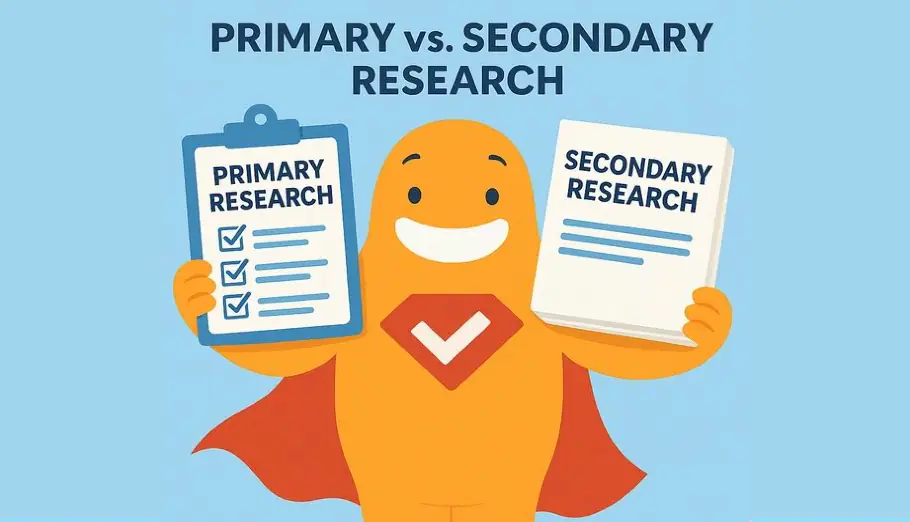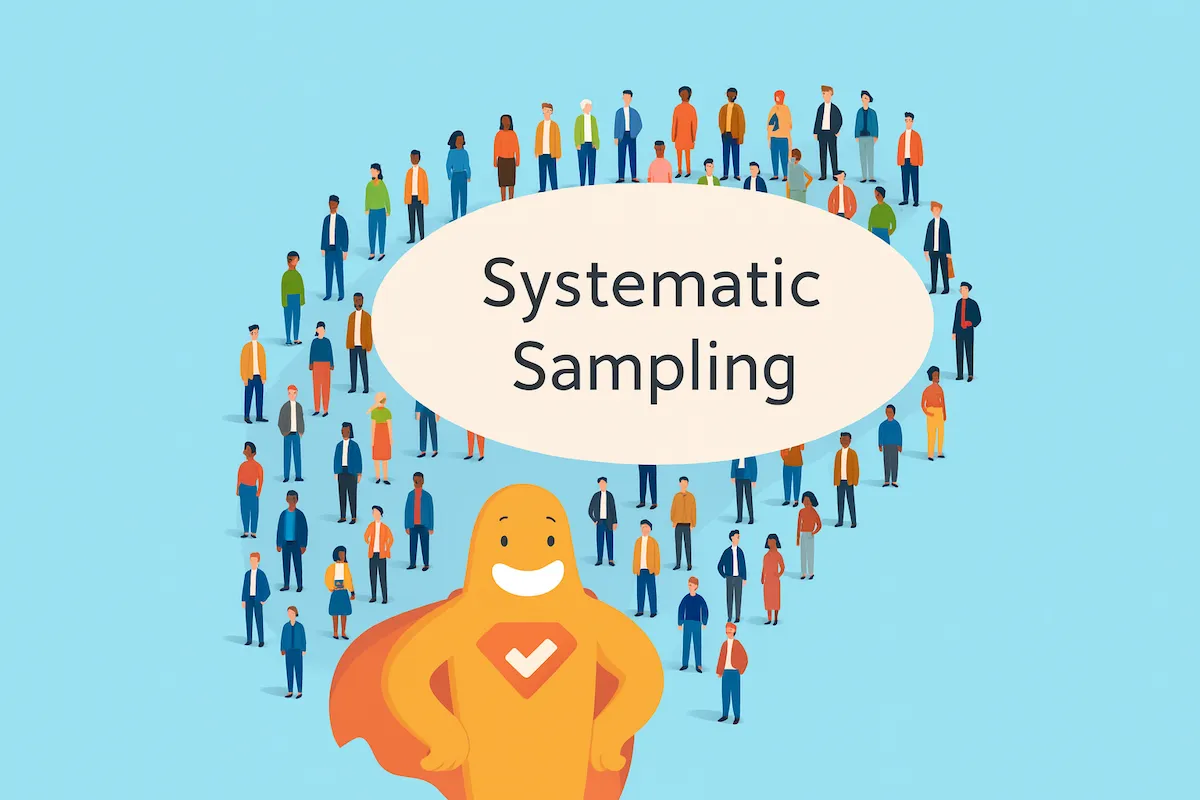Researchers use a variety of tools at their disposal when putting together papers, theories, and reports. A lot of the types of research they do can be put into two buckets: primary research and secondary research. In this blog, we’ll look at both and the pros and cons of each.
Create Your FREE Survey or Questionnaire Now
Primary vs. Secondary Research
Primary Research is research that you collect first-hand directly from sources. This could be done through surveys, interviews, observations, focus groups, experiments, and so on (Check out our blog 18 Types of Survey Methods for more). The purpose is to gather new, specific, and original data tailored to your needs. An example of this would be a company surveying its customers to get their opinions on a product or service.
Secondary Research is research based on existing data collected by others. You are simply referencing their data, whether it’s by reading reports, articles, databases, books, or government studies. In this case, you are analyzing and interpreting information that is already available. An example of this would be a student using published journal articles in order to write a paper about environmental concerns.
Now, let’s take a closer look at both primary and secondary research.
Primary Research
We’ve established that this is about you collecting fresh, original information because you need specific, up-to-date data about something important to your business or research. Of course, you don’t have to do it yourself; you may have an in-house market research team you can put to work or hire a pro (agencies and consultants are happy to help, for a price of course). Outsourcing can actually be beneficial because you get experts who bring fresh eyes and avoid different types of bias (Check out our blog Different Types of Survey Bias and How To Avoid Them). There are two types of primary research to be aware of.
- Exploratory research: This is when you’re trying to figure out what the problem even is. For example, let’s say you own a fast food restaurant and are hearing that employees are unhappy and as a result, their attitude is turning away customers. But, you don’t know why they’re unhappy, so you begin interviewing the employees.
- Conclusive research: This is when you know what the problem is and you want to solve it. Using our example above, you learn that the shift manager was a nightmare boss. So, you replace him, employees are happy again, and in turn, customers are coming back.
Examples of Primary Research Methods:
- Surveys: Quick, easy, and often inexpensive, especially with online survey tools.
- Interviews: More time-consuming but designed to collect very specific and detailed information. These can be done face-to-face, on the phone, or via video.
- Focus groups: Gather a small group, moderate a discussion, and watch the ideas fly – just be ready to steer the conversation if it goes off-track.
Secondary Research
We know now that secondary research is research that is already readily available. In other words, someone else did the hard work first, and you’re smart enough to use it! It’s almost always the best starting point. Even if you don’t find exactly what you need, secondary research builds a strong knowledge base and might even point you toward opportunities you hadn’t thought of. You can search for secondary research online, in market research reports, peer-reviewed journals, government data, white papers, industry associations, and public company data. Some of these resources may cost money, or may be more difficult to access, but where there’s a will there’s a way.
Examples of Secondary Research Methods:
- Literature reviews: Gather and summarize lots of existing studies.
- Content analysis: Look for patterns in existing text (great for social science topics).
- Data analysis with digital tools: Let an AI Assistant and or other software program dig through mountains of information for you.
Create Your FREE Survey or Questionnaire Now
When Should You Use Primary vs. Secondary Research?
Both primary and secondary research are super useful when you’re digging up information. Each can get some great results. But if you combine them? Now you’reworking with some next-level market research. In fact, most solid research strategies use a bit of both — a little DIY data collection/surveying mixed with using data that’s already out there.
So where do you begin? Even though it might feel backward, you actually want to start things off with secondary research as it can give you a big picture look at your topic. It may spark new ideas and help you figure out what specific gaps you want to explore with your own original research, as well as inform the type of questions you might ask on a survey or in a focus group.
Pros & Cons of Primary and Secondary Research
While both primary and secondary research have their place in any good study, there are pros and cons to each. Some have already been covered, but this handy chart may help you decide which is best for your needs, especially if performing both types of research are out of the question.
Primary Research

Secondary Research

Conclusion
In conclusion, Primary Research involves collecting new, original data directly from sources through methods like surveys, interviews, and experiments, offering specific insights tailored to particular needs. On the other hand, Secondary Research relies on existing data gathered by others, such as reports, articles, and studies, allowing for analysis and interpretation of already available information. Both types of research play crucial roles in acquiring valuable knowledge, but they differ in their approach and the nature of the data used.
Ready to begin your primary research with a survey, questionnaire, or poll? SurveyLegend can help, and you can start for free. Our surveys are easy to create and easy on the eyes, helping to ensure high response rates and a wealth of valuable data. We also help with analysis, and our surveys are some of the most secure on the internet. Get started today!
Create Your FREE Survey or Questionnaire Now
FAQs (Frequently Asked Questions)
Is it okay to use secondary research without giving credit to the original sources?
No. It’s important to always give credit to the original authors or sources when using secondary research. Not citing your sources is basically plagiarism, and it’s not just bad for your reputation—it’s also unethical.
Can observational research be primary or secondary?
Most of the time, observational research is considered primary because you’re collecting new data by directly observing something. But it can get a little tricky if you’re looking at something that’s already been recorded, like old footage or past observations, then it might be seen as secondary research. So, if you’re watching or tracking something firsthand, it’s primary, but if you’re just analyzing old data, it’s secondary.
Can surveying be both primary and secondary research?
Usually, surveying is considered primary research because you’re collecting new data directly from people. But it can be secondary if you’re analyzing survey results that were collected by someone else or if you’re using a survey that’s already out there. So, it really depends – if you’re doing the survey yourself, it’s primary; if you’re just looking at data from someone else’s survey, it’s secondary.



